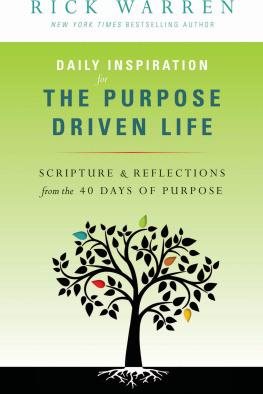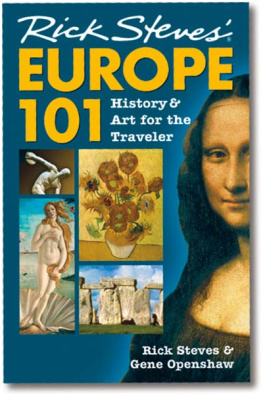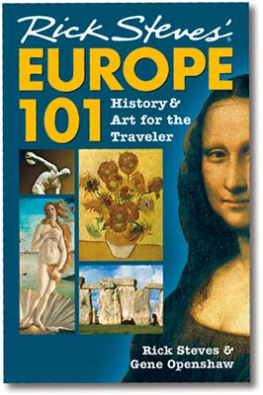Contents
From Silicon Valley to Swaziland: How One Couple Found Purpose and Adventure in an Encore Career
Copyright 2015 Rick and Wendy Walleigh. All rights reserved. No part of this book may be reproduced or retransmitted in any form or by any means without the written permission of the publisher.
Published by Wheatmark
1760 East River Road, Suite 145, Tucson, Arizona 85718 U.S.A.
www.wheatmark.com
ISBN: 978-1-62787-185-3 (paperback)
ISBN: 978-1-62787-186-0 (ebook)
LCCN: 2014954651

To our children, Adrian and Diana,
who are already working to make
the world a better place.
Acknowledgements
M any people have contributed their support to us over the seven years that we worked to publish this book, and we would like to give them at least some small level of recognition and thanks.
First must come all of the people we worked with in Swaziland and Kenya, both TechnoServe employees and participants in the TechnoServe projects. Some are mentioned by name (real or pseudonym) in the book, and others are unfortunately too numerous to mention. We were new to international development and they informed, coached, and interpreted for us so that our work could be useful.
Next, wed like to thank our friends and colleagues who read our book at various stages of refinement and provided feedback to make it better, including Holly Marvin, Holly Krueger, Tim McLellan, and Simon Winter. We are especially grateful to Bruce McNamer, George Schutter, Leslie Johnston, Debra Dunn, and Ron Boring for giving us feedback and writing endorsements.
In the professional arena, Arielle Eckstut was a great editor and coach, and Lori Leavitt and Grael Norton have been our able guides throughout the publishing process.
Thanks to all. Without them, this book would not have happened.
A s the twin-engine turboprop climbed out of Oliver Tambo airport, we could see the densely packed slums surrounding Johannesburg, but the urban landscape quickly disappeared. It was winter in the southern hemisphere, and the flat terrain below was dry and brown. The land was chopped up into tiny plots for farming, most of them fallow. They looked rather sad, as farmland does when nothing is growing. The flight from Johannesburg to Matsapha Airport near Manzini, Swaziland, takes less than an hour, but this was our fourth flight since leaving San Francisco. We had been traveling for thirty-six hours, including two overnight legs.
The journey from San Francisco to Manzini, Swaziland, is just about the longest possible trip on earth. In addition to contending with the long flights, we had to manage our carry-on luggage through the multiple airport transits. Since we were staying for nearly six months, we brought a lot of luggage. The airlines allow you to check two bags per person, so we had four large suitcases weighing the maximum of fifty pounds each. In packing, we had allocated them fairlythat is, three for Wendy and one for me. She wasnt going to Africa without a sufficient wardrobe and a six-month supply of her favorite beauty aids and toiletries.
However, throughout the trip, Wendy was a real trouper. Since two hundred pounds of luggage was not a sufficient allowance for all of our stuff, we also maximized our carry-ons. For carry-ons, the airline allowances are by size, not weight. Consequently, we each carried a thirty-five-pound duffel and a fifteen-pound computer bag. These were heavy for me, and my shoulders ached, but as we slogged through our last transit, I wasnt sure Wendy was going to make it. Going through the terminal at Oliver Tambo, she looked as if she was about ready to drop. I helped some, and she pulled through bravely. Later, we saw the rough, red welts she had from the shoulder straps, but they cleared up in a few days.
As our flight approached Swaziland, the topography changed again. We began to see a few small mountains. They looked like the foothills in California, but craggier. In California, it rains in the winter, and the foothills are covered with green grass. In late spring, the rains stop and the land turns light brown as the vegetation dies. In California PR terms, the hills turn golden. Theyre really dead brown, like straw, but can still be beautiful in a rugged natural way. In Swaziland, it rains in the summer and the winters are dry. The approaching hills looked comfortably familiar, like California with the dry, straw-brown grass contrasting with the black rock and the red dirt.
As we approached Matsapha International Airport, I wasnt nervous or even excited. I was mostly curious and definitely fatigued. On landing and deplaning, the airport felt welcoming and comfortable in a cute and informal way. Since Matsapha has the only paved runway in Swaziland, it is an international airport by default. It had the smallest commercial airline terminal I had ever seen, particularly at an international airport. The terminal had one door for arrivals and one door for departures. Separating the two doors was a pleasant little garden, about ten feet square, of local flora surrounded by carefully positioned rocks. Someone had taken time and effort to make it attractive, and it worked. We entered the arrivals door and passed through immigration and customs in a space the size of our living room at home.
Outside the terminal, Kiki, the driver from TechnoServe, was waiting for us with a warm, smiling face, and we were very glad to see him. With very few people awaiting the arrival of our flight, it wasnt hard for us to pick out Kiki. And as we were the only non-Africans on the flight, it wasnt hard for him to identify us.
We loaded up our luggage and set off for Mbabane (pronounced by humming the m and then saying buh-bahn), the capital of Swaziland and our home for the next six months, about a half hour away. Our first destination was the TechnoServe office where we would be working. The office was on the second floor of a small, modern shopping mall in the center of Mbabane (population 90,000). The TechnoServe office had been open only since February, but was already becoming crowded. We met fourteen people, but there were nearly twenty names on a whiteboard that showed everyones location throughout the day. Among our future colleagues, only Leslie, our country director and boss, plus three other volunteers had come from the United States. Leslie had worked for TechnoServe in Mozambique for several years prior to Swaziland. Everyone else was from Swaziland. Some were full-time employees and some were interns, but everyone was young, most of them younger than our two children. After we met our coworkers, we got local cell phones and then bought a few groceries so we could exist until Monday.
Having spent two overnights on airplanes and having endured a nine-hour time change, we got tired very quickly, so we were driven to our lodgings about four miles outside of Mbabane. We were delighted to see the quaint little cottage where we would be living. Our cottage and several others were located on the grounds of a Christian retreat center along with a small conference facility and a chapel. The cottages were widely spaced and surrounded by large eucalyptus trees. Our front door exited to a patio overlooking a deep valley with mostly forest on the opposite side. Once again, we could imagine we were in the foothills of California, except for the thatched roofs on the cottages.
Later, as we ate dinner, we discussed our first impressions. From what we had seen, Swaziland was definitely a developing country. However, it seemed cleaner, neater, and sometimes more modern than many others we had visited. Especially in the center of Mbabane, where there was a shopping plaza dating from the early nineties and two small malls that were newer, we felt the ambiance of a small working-class city in the United States or Canada. It wasnt an exotic environment from an African novel or a movie. The city streets were better maintained than in some U.S. cities, and the road from the airport to Mbabane was a four-lane divided highway. While the cars were not extravagant, they were not all old and run-down as they are in many developing countries; and they seemed to be plentiful. However, contrasting with the pleasant, if not inspired, architecture of the shopping area was a huge concrete skeleton of an abandoned multistory building that dominated the hill above the city. I was sure that there was a story of speculation and probably corruption behind the giant edifice because it looked as if it had been abandoned, partially constructed, many years earlier. I wasnt judging, and I hadnt drawn any immediate comprehensive conclusions; I was just trying to take in the comparisons and contrasts to begin the mental processing.
Next page












